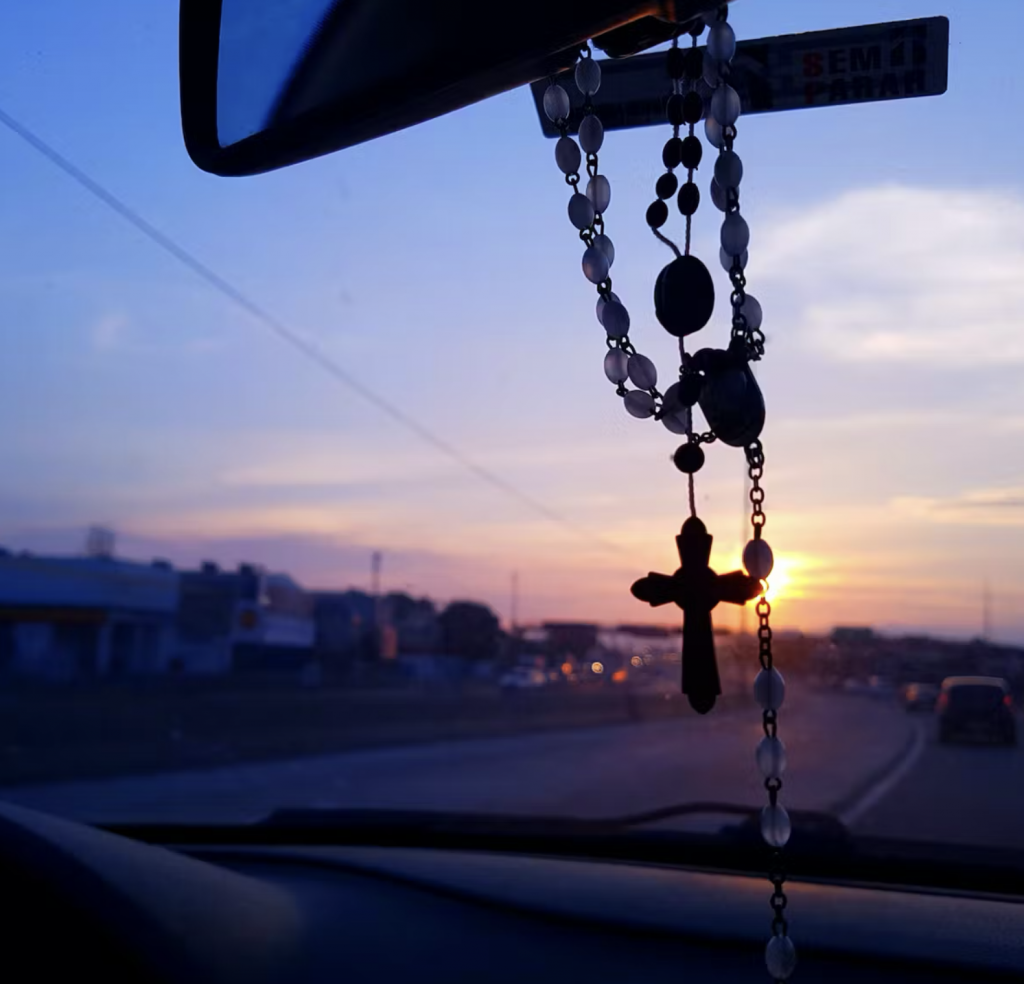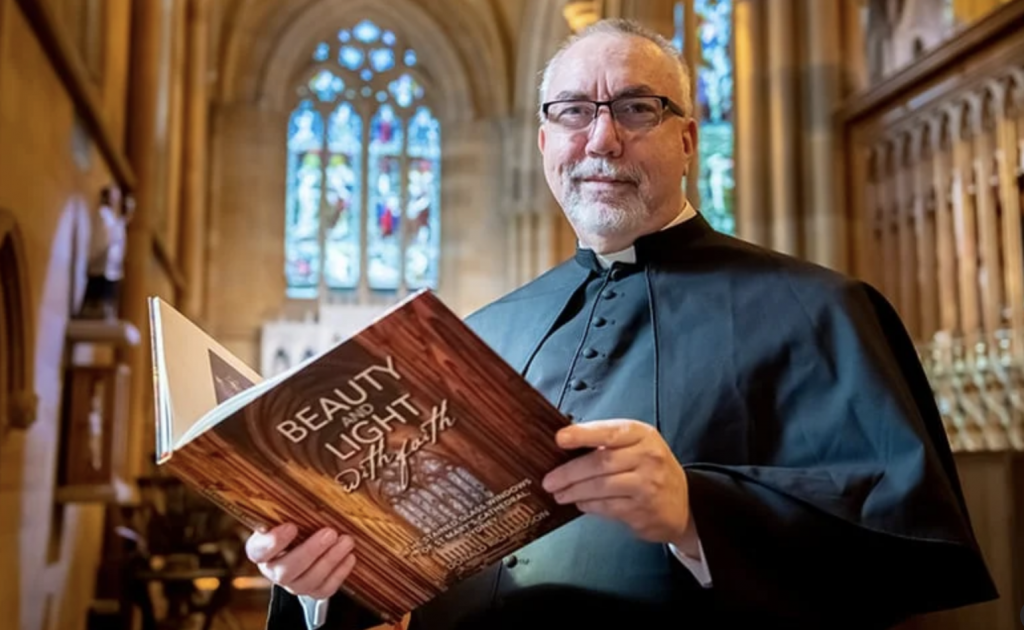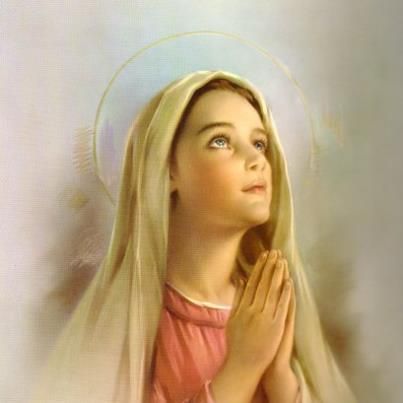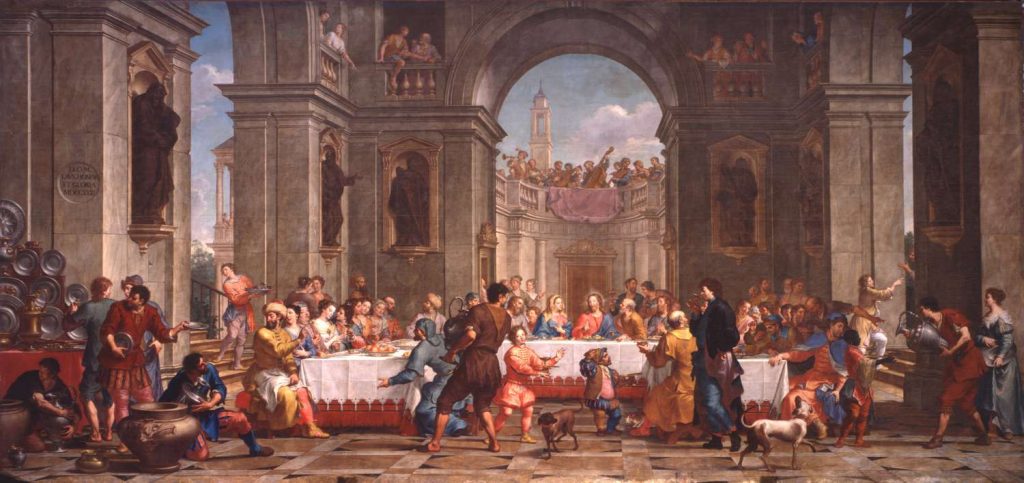
As one drives around Sydney, one sees Rosary beads swinging beneath rear vision mirrors. No doubt the drivers of the cars (and passengers) from time to time pray as they drive. As Pope Francis has commented, the Rosary is a contemplative prayer. The decades are well introduced by periods of silence, and the prayers which comprise the Rosary are best said slowly, so the mysteries are not lost in babble. One does one’s best. The Rosary prayed contemplatively as one delivers children to school, travels to and from work, attends appointments, visits family, and friends, goes on holiday, ensures that we are accompanied by Jesus and Mary in union with the Church in the course of our day. Those Rosary beads swinging beneath rear vision mirrors exemplify inseparable devotion, to Jesus, to Mary his Mother, and to the Church.
Those Who Pray as They Drive
Those who pray as they drive are likely to be regular participants at Mass and the Sacraments, animated by love of God in their work, in their marriages and family life, open to the gift of life, daring to have children, and to bring those children up in the practice of the faith, taking care of elderly parents, caring for those most in need, both with money, and with practical help. Some who pray as they drive may have sought refuge in Australia from persecution in their homeland. The Rosary beads swinging beneath the mirrors of cars being driven around Sydney are an aspect of a perennial tradition of belief and practice, a perennial tradition which transcends the diversity of Sydney.

Venerating Mary
May is traditionally the month of Our Lady. The liturgical year celebrates many Marian feasts. The tradition of venerating Mary, the Mother of Jesus, so embedded in the liturgical calendar, has given rise to many great artistic works.
Stained Glass Windows Of St Marys
Fr Don Richardson’s Beauty and Light with Faith: the Stained Glass Windows of St Mary’s Cathedral, Sydney (2021) illustrates the beautiful stained glass of St Mary’s in which the Blessed Virgin Mary is second only to Jesus of Nazareth. The stained-glass windows of St Mary’s are a compendium of the Gospel. Hopefully, one day, there will be new stained glass windows installed at St Mary’s Cathedral to commemorate the Luminous Mysteries. The stained-glass windows of St Mary’s Cathedral are a summa of Catholic belief and practice, not least as regards Our Lady. If one knew nothing of Catholicism, one could easily glean much of what one needs to know from the stained glass windows of St Mary’s Cathedral.
Ruth
The Book of Ruth in the Jewish scriptures is an endearing, indeed nostalgic, account of a Moabitess, who converted to Judaism, and became the great grandmother of King David. The Moabites were traditional enemies of the Jews. This is a story of love and marriage and family – quite at odds with Maricon’s ancient heresy which dismisses the Jewish scriptures. The Jewish scriptures teach that we are all, no matter who we are, and where we come from, created in the image and likeness of God, each and everyone capable of coming to know and love God. We come to God through others, with others.
Foreshadowing Mary
Ruth, like so many women of the Hebrew Bible – Sarah, Rebecca, Rachel, Tamar, Rahab, Bathsheba, Deborah, Hannah, Sarah, Judith, Esther, the Perfect Wife of Proverbs, the Mother of the Seven Sons of Maccabees – foreshadows Mary, the Mother of Jesus.
St Luke and St John
Two of the Gospel writers, St Luke and St John, together, but each from their own perspective, provide us with a rounded account of Mary, the Mother of Jesus. Jesus of Nazareth was crucified about 30 AD. Mary, the Mother of Jesus, lived with St John, until her death, and Assumption into heaven. As the nativity section of St Luke’s Gospel appears to be drawn from Mary, who treasured all these things in her heart, and who lived with St John after Jesus’ death, it is reasonable to infer both St Luke, and St John were acquainted. St Luke’s Gospel was written, perhaps in the 60’s. St John, having read the Gospel of St Luke, plugged in the gaps. Between St Luke and St John we have a rounded understanding of Mary whose role in the history of salvation is secondary only to that of her Son.

What Mary Said
St Luke tells us what Mary said: How can this be, since I have no husband? The tradition sees Mary’s words in response to the Angel Gabriel as pointing to her virginity:
Behold, I am the handmaid of the Lord; let it be done unto me according to your word.
In these words of Mary, we have the essence, the rationale of all Marian devotion. The conversation between Mary and the Angel Gabriel is the longest exchange involving Mary in the Gospels, and so is the first place to go to consider Mary the Mother of God, and our Mother.
Magnificat
Mary responds to her cousin Elizabeth:
My soul magnifies the Lord, and my spirit rejoices in God my Saviour, for he has regarded the low estate of his handmaiden. For behold, henceforth all generations will call me blessed; for he who is mighty has done great things for me, and holy is his name. And his mercy is on those who fear him from generation to generation. He has shown strength with his arm, he has put down the mighty from their thrones, and exalted those of low degree; he has filled the hungry with good things, and the rich he has sent empty away. He has helped his servant Israel, in remembrance of his mercy, as he spoke to our fathers, to Abraham and to his posterity for ever.
The Magnificat is drawn from the Hebrew Bible. It relates to the Canticle of Hannah, the mother of the priest and prophet, Samuel, who himself is a type of Christ. The Old Covenant is fulfilled in both Jesus and Mary. In both the Canticle of Hannah, and in the Magnificat, human ways of thinking are contrasted with the Divine. Mary is the Seat of Wisdom.
In the Temple
Son, why have you treated us so? Behold your father and I have been looking for you anxiously.
There is an intriguing equivocation between Mary’s use of the word “father” (referring to Joseph) and Jesus’ use of the word (referring to God the Father). What specifically, in the circumstances, Jesus meant by his Father’s business, we do not know, and can only speculate about. But we do know that Mary was a human mother, who provides two examples of saying what she thought (the second being at Cana). And on each occasion Mary got her way. On this occasion, the boy Jesus returned to Nazareth with Mary and Joseph, and was subject to them – and Jesus grew in knowledge and wisdom. St Ambrose sees the discovery of Jesus in the Temple as prefiguring his Resurrection, when Christ will be three days absent in death, only to be found again in the flesh. The anxiety following the body of Jesus being placed in the tomb will likewise give rise to joy and relief at his rising.
What Was Said of MarySt Luke also tells us what others said of Mary. The angel Gabriel greets Mary: Hail Mary, full of grace, the Lord is with you! From the angel Gabriel’s words (and later from the words of her cousin Elizabeth) are drawn the first part of the Hail Mary. The angel Gabriel continues: Do not be afraid, Mary, for you have found favour with God. And behold, you will conceive in your womb and bear a son, and you shall call his name Jesus. And further: The Holy Spirit will come upon you, and the power of the Most High will overshadow you; therefore the child to be born will be called holy, the Son of God…For with God, nothing will be impossible. Gabriel refers to all three persons of the Blessed Trinity. Just as God overshadows the Tabernacle and establishes his presence in Israel, unveiling the glory of God, so God becomes incarnate in the Virgin Mary. Mary is Ark of the New Covenant.
Elizabeth
Elizabeth greets Mary:
Blessed are you among women, and blessed is the fruit of your womb! And why is this granted me, that the mother of my Lord should come to me? … And blessed is she who believed that there would be a fulfilment of what was spoken to her from the Lord.
Elizabeth’s words (together with the words of the angel Gabriel) became the first part of the Hail Mary. In the meeting of these two women, Elizabeth and Mary, the Old Covenant meets the New, and the New Covenant meets the Old.
Simeon
Simeon, that righteous and devout man, looking for the consolation of Israel, says to Mary: “Behold, this child is set for the fall and rising of many in Israel, and for a sign that is spoken against (and a sword will pierce through your own soul also), that thoughts out of many hearts may be revealed.”
Simeon is looking for the Messiah, the redeemer, and sees in the baby Jesus, that Messiah, that redeemer. Mary, more than any other person in history, experienced and shared intimately in the mystery of the redemptive suffering that Christ endured for our salvation. Mary is the Mother of Sorrows.
The boy Jesus says to Mary and Joseph: “How is it that you sought me? Did you not know I must be in my Father’s house?” (otherwise translated “about my Father’s business“).
So, we learn that we must respond above all to God. In these various conversations, we learn human ways are not God’s ways. We must learn to see things differently.

St John
St John, in the last of the four Gospels to be written, perhaps in the 90’s AD, as it were, fills in the gaps which St Luke had left. One of the gaps was the wedding feast at Cana at which John was present, at the time possibly still a teenager.
Wedding Feast at Cana
Mary’s matter of fact They have no wine, spoken laconically, seemingly a mere observation, but in fact a forceful request, spoken on behalf of the couple whose marriage feast, at Cana, Jesus and Mary were attending, demonstrates her care and compassion, care and compassion which we invoke in the Memorare. Jesus’ response: O woman, what have you to do with me? My hour has not yet come – evokes Mary as the new Eve whose obedience to God is contrasted with the disobedience of the first Eve. Mary is the Advocate of the couple whose wedding she attended, just as she is our Advocate. At her prayer, Jesus’ rejection, suffering and death are brought forward – and so the sword which Simeon foretells will pierce Mary’s heart. Do whatever he tells you – spoken to the servants, echoes down the ages as Mary’s advice to us here and now. Mary’s words: Do whatever he tells you – bring to an end the time when Jesus was largely hidden from public view. Now, begins a time when Jesus is public property – teaching, gathering disciples, working miracles. The end, the point of the prophecies, which, surely, Jesus and Mary had discussed, was about to come.
Crucifixion
Woman, behold, your son! And Behold, your mother! spoken by Jesus as he was crucified, dying on the Cross, establish Mary as Mother of the Church, and as the spiritual Mother of every Christian believer. As Mary stayed with Jesus as he was dying, so Mary will stay with us at the hour of our death, epitomised in the Hail Mary: Holy Mary, Mother of God, pray for us sinners now, and at the hour of our death.
Devoting Themselves to Prayer With Mary
Following Jesus’ Ascension, St Luke records, in Acts, the remaining eleven Apostles (Judas having suicided) with one accord devoted themselves to prayer, together with the women and Mary the mother of Jesus, and with his brethren. Mary prays with the Apostles as they await the promised Holy Spirit, who would teach, guide, and strengthen them. This is the final earthly appearance of Mary recorded in the New Testament.
Revelation
In Revelation, the final word, as it were, of the Bible, St John sums up the role of Mary:
And a great sign appeared in heaven, a woman clothed with the sun, with the moon under her feet, and on her head a crown of twelve stars; she was with child and she cried out in her pangs of birth, in anguish for delivery. And another sign appeared in heaven; behold, a great red dragon, with seven heads and ten horns, and seven diadems upon his heads. His tail swept down a third of the stars of heaven, and cast them to the earth. And the dragon stood before the woman who was about to bear a child, that he might devour her child when she brought it forth…
As the Didache Bible comments:
“The woman clothed with the sun, represents Mary, who gave birth to the Child, who will rule all nations. The crown of twelve stars indicates the Twelve Tribes of Israel, as well as the Twelve Apostles of the Church, the new Israel. In sacred art, she is often depicted as having a crown of twelve stars. She also represents the Church, who, as a Mother, makes Christ present in the world, by giving birth to the faithful through baptism, and whose members are persecuted by the State.”

Mary and the Church
The Second Vatican Council’s Lumen Gentium: Dogmatic Constitution on the Church (1964) sums up the tradition, drawing on the Fathers of the Church:
Embracing God’s will with a full heart and impeded by no sin, she devoted herself totally as handmaid of the Lord to the person and work of her Son, under Him, and with Him, by the grace of almighty God, serving the mystery of redemption.
Lumen Gentium is commented on by Henri de Lubac SJ, a peritus at the Second Vatican Council, and one of the great theologians of the twentieth century. De Lubac wrote a book, really a collection of addresses and papers, The Church: Paradox and Mystery, originally published in French in 1967, shortly after the Second Vatican Council, republished by Ignatius Press in 2021. The first three chapters are a timeless commentary on Lumen Gentium. De Lubac argues: “The Church is our Mother because she gives us Christ. She brings about the birth of Christ in us.” Chapter VIII – The Blessed Virgin Mary, Mother of God, in the Mystery of Christ and the Church, according to De Lubac, crowns Lumen Gentium. There is but one Mediator between God and man, Jesus Christ. But Mary is the Mother of the Redeemer, and our mother in the order of grace. Lumen Gentium, drawing on the writings of the Fathers, sees a parallel between Mary and the Church.
Receptivity
Mary is not the prototype of hierarchical power, but of spiritual receptivity to divine grace as virgin and mother. De Lubac quotes the French writer, Paul Claudel, using everyday language, rather than the precise language of a theologian: “The holy Virgin, so far as I am concerned, is the same thing as the Church. I have never learned to distinguish between them.” Mary is a figure of the Church insofar as she is a sanctifying mother. Mary occupies a place in the Church, the highest after Christ.
Archetype of Christian Contemplation
Mary is the archetype of Christian contemplation, for she treasured all these words and pondered them in her heart. She guards us against viewing the Word as something exterior to our being, confusing the Word with our word, with a wisdom guided by our own very human judgment. Lumen Gentium begins with the words, “Christ is the light of nations”, and ends with Chapter VIII The Blessed Virgin Mary, Mother of God, in the Mystery of Christ and the Church.
Reform of the Church
So here is the frame of reference for reform of the Church – Christ, the Blessed Virgin Mary, and the Church, each, together. Anyone who proposes reform of the Church, without recognising their own personal sinfulness; without regard to Christ; without regard to the Blessed Virgin Mary, Mother of God, Mother of Christ, Mother of the Church; and without regard to what the Church is – is whistling in the wind.
Back To Bethlehem
Swinging with those Rosary beads beneath the rear vision mirrors of cars travelling around Sydney is two thousand years of devotion, of contemplation and of thought, directed to the Blessed Virgin Mary, Mother of God, Mother of Christ, Mother of the Church. We come to Jesus through Mary.
Those who say the Rosary as they drive, members of the People of God, at one with others who share a faith present at all times, in all places, sometimes tiny and imperilled, sometimes widely present, are part of a tradition, which goes back, both to Bethlehem, and to Calvary – and indeed before Bethlehem and Calvary, to the Hebrews, and indeed before, to the beginning of time.
Michael McAuley
